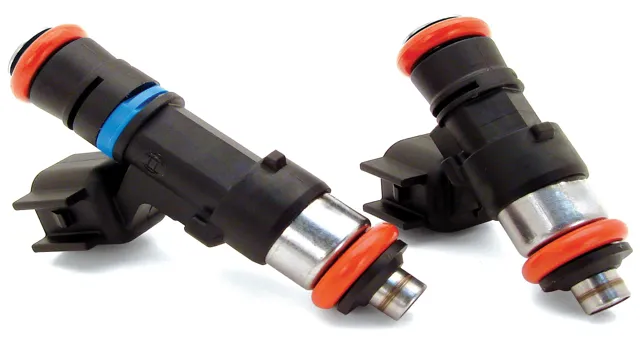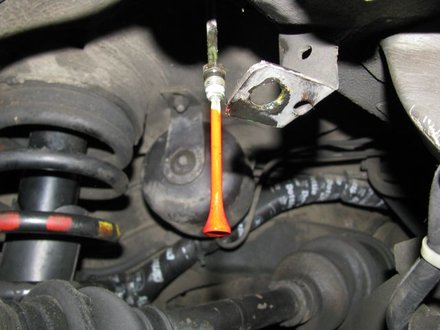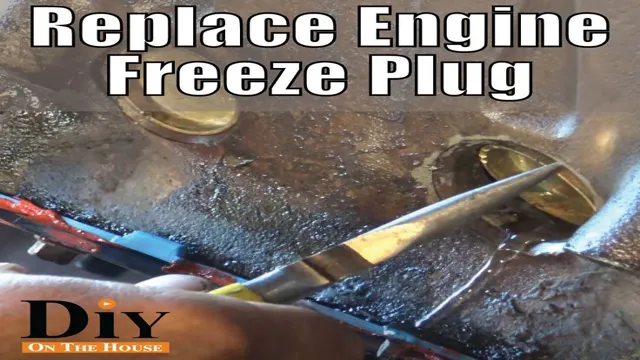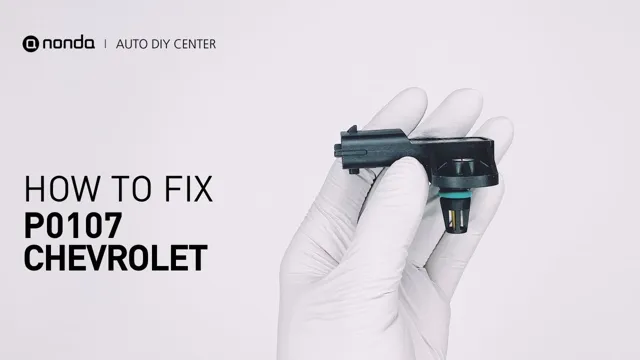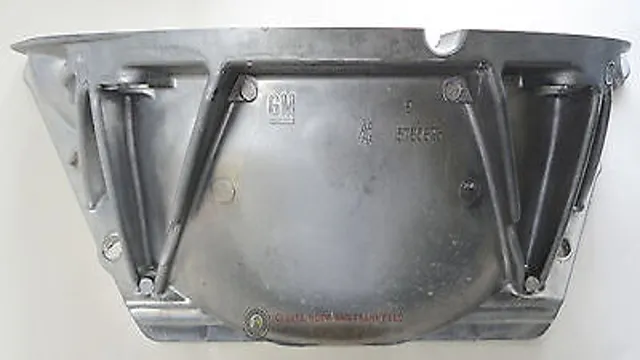Fuel the Power: A Comprehensive Guide on How to Easily Identify Fuel Injectors
If you’re a car owner or enthusiast, you know how important fuel injectors are to the overall performance of your vehicle. They play a crucial role in ensuring that your engine gets the right amount of fuel at the right time to run smoothly and efficiently. However, if you’ve ever needed to replace or upgrade your fuel injectors, you may have realized that identifying the right ones can be a daunting task.
With so many options on the market, it can be overwhelming to figure out which ones are the best fit for your car. In this blog, we’ll discuss how to identify fuel injectors so that you can make an informed decision when it comes time to make a purchase. So, whether you’re a seasoned mechanic or a novice car enthusiast, read on to learn how to choose the right fuel injectors for your vehicle.
Introduction
If you’re wondering how to identify fuel injectors, there are a few ways to go about it. One method is to look for the injectors themselves – they typically appear as small metal cylinders with wires protruding at the top. But if you’re unable to see the injectors, there are other ways to find them.
You can consult your car’s manual to locate the exact placement of the injectors, or note the pattern of tubing leading to the engine, as injectors are typically attached to the fuel rail. Additionally, you can use a fuel pressure gauge to see where fuel is being delivered to the engine, which will indicate the location of the injectors. By learning how to identify fuel injectors, you’ll be better equipped to maintain and repair your vehicle’s fuel system.
What are Fuel Injectors
Fuel injectors are a vital component of modern engines, allowing precise control over the fuel delivery process. These small, yet powerful devices are responsible for delivering the right amount of fuel to the engine at precisely the right time, ensuring optimal performance and efficiency. The role of the fuel injector is to take fuel from the tank, pressurize it, and spray it into the engine’s combustion chamber.
This process must be done with pinpoint accuracy to avoid issues like misfires, stalling, and poor fuel economy. Fuel injectors have replaced the older carburetor systems, which were less efficient and required more maintenance. Overall, fuel injectors allow modern engines to perform with better power and efficiency than ever before.
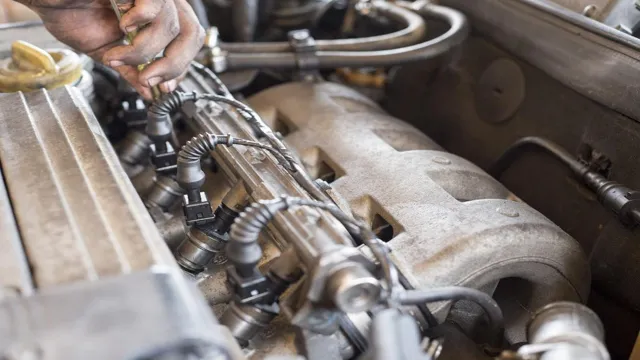
Types of Fuel Injectors
Fuel injectors play a vital role in ensuring your car engine runs smoothly. But just like everything else, fuel injectors are not created equal, which results in different types of fuel injectors; all with unique characteristics. If you’re a car enthusiast or just curious, knowing the different types of fuel injectors will help you understand how your car engine works.
It is imperative to note that the type of fuel injector your car uses might vary depending on the make and model of your vehicle. Therefore, it’s advisable to get a professional mechanic to check the type of fuel injector your car requires. In this article, we will explore the different types of fuel injectors, and their functionality.
Identifying Fuel Injectors
Fuel injectors are critical components in any gas-powered engine, responsible for delivering fuel to the engine at the right time and in the right amount. Identifying your fuel injectors is an essential step in the process of maintaining and repairing your engine. The easiest way to identify your injectors is to consult your vehicle’s owner’s manual or maintenance guide, which will provide details on the make and model of the injectors.
You can also look for identification markings on the injectors themselves, which may include a part number or manufacturer’s logo. Another option is to take your car to a mechanic, who can help you identify the injectors and diagnose any issues that may be affecting their performance. By taking the time to properly identify your fuel injectors, you can ensure that your engine is running efficiently and reliably, and enjoy the full power and performance that your vehicle has to offer.
Location of Fuel Injectors
The location of fuel injectors in a vehicle can vary depending on the make and model. However, there are some general guidelines to follow when trying to identify where they are located. Fuel injectors are responsible for delivering fuel to the engine, so they are typically found near the intake manifold or cylinder head.
Look for wires or hoses connected to a fuel rail, which will indicate where the injectors are located. In some vehicles, the fuel injectors may be tucked away on the side or bottom of the engine, requiring some extra investigation to locate them. Once the injectors have been identified, they can be properly maintained and even upgraded if necessary to ensure optimal engine performance.
By understanding the location of fuel injectors, vehicle owners can better diagnose fuel-related issues and keep their engines running smoothly.
Visual Identification
Identifying fuel injectors can be a daunting task for many car enthusiasts. These small components regulate the fuel flow into the engine, ensuring it runs smoothly and efficiently. One way to identify fuel injectors is by their visual appearance.
Most injectors have a number or color code imprinted on them when they were manufactured. This code helps to identify the injector and its specifications, such as its flow rate or compatibility with a specific engine. However, some injectors may not have any visible markings, making it more challenging to identify them.
In such cases, a fuel injector flow test may be necessary to determine the injector’s specifications. It involves measuring the actual fuel flow rate to determine if it falls within the manufacturer’s specifications. By doing so, you can ensure that your engine is running efficiently and smoothly, and any issues can be resolved promptly.
So, take the time to identify your fuel injectors properly to maintain your car’s performance and longevity.
Resistance Test
Have you ever wondered how to identify a faulty fuel injector? One simple way to test it is by using a resistance test. This test involves measuring the resistance levels of each injector to identify any discrepancies. To start, remove the fuel rail and disconnect the electrical connectors from each injector.
Then, using a digital multimeter, set it to resistance mode and place the probes on the injector terminals. The ideal range for most injectors is between 11 and 18 ohms. If any injector falls outside of this range, it’s likely faulty and needs to be replaced.
By conducting a resistance test, you can save yourself time and money by identifying a faulty injector and avoiding potential engine damage.
Spray Pattern Test
If you’re experiencing issues with your car’s engine such as rough idling, misfires, or overall poor performance, it may be time to check your fuel injectors. The spray pattern test is an effective way to identify whether or not your injectors are in good condition. By using a specialized tool, you can measure the spray pattern and ensure that it’s even and consistent.
If the spray pattern is uneven or erratic, it’s a sign that your injector may be clogged or malfunctioning. Proper maintenance of your fuel injectors is crucial for maintaining the performance and longevity of your vehicle. By regularly checking your injectors, you can catch any potential issues before they develop into more severe problems.
So, if you’re experiencing engine issues, don’t neglect your fuel injectors and consider performing a spray pattern test. Your car will thank you for it.
Replacing Fuel Injectors
Identifying fuel injectors can be a daunting task for many car owners. However, knowing the type and number of fuel injectors is crucial when it comes to replacing them. Luckily, most fuel injectors in modern vehicles have an identification number engraved on them.
With this identification number, car owners can easily identify the type of fuel injector their car uses. Additionally, the number of fuel injectors that a car uses can vary depending on the make and model, so it’s essential to refer to the car’s owner manual to find out how many fuel injectors your car needs. Once you have identified the type and number of fuel injectors, you can then proceed to purchase the right set for your vehicle and replace them.
Replacing fuel injectors can help improve your car’s fuel efficiency, performance, and overall driveability.
When to Replace Fuel Injectors
Fuel injectors are an essential component of any vehicle’s engine system. They’re responsible for delivering fuel to the engine in the right amount and at the right time, ensuring optimal performance and fuel efficiency. However, like all things, fuel injectors can wear out and eventually fail.
It’s important to know when to replace them to avoid damage to your engine and costly repairs. Some signs that indicate a failing fuel injector include rough idle, decreased fuel efficiency, engine misfires, and a decrease in overall performance. If you notice these signs, it’s best to seek professional help as soon as possible.
A professional mechanic can diagnose the issue and replace the faulty fuel injector with a new one, ensuring your engine runs smoothly, and efficiently. Regular maintenance and cleaning of fuel injectors can also extend their lifespan, saving you money in the long run. Remember, taking care of your vehicle’s fuel system is crucial for optimal performance and longevity, and replacing fuel injectors when necessary is a vital part of that.
Tips for Replacing Fuel Injectors
Replacing fuel injectors can be a daunting task, but with some basic knowledge and a few helpful tips, you can get the job done easily and efficiently. Firstly, it’s crucial to have the correct replacement injector for your specific vehicle. Double-check the part numbers and compare them to confirm that the new injector is an exact match.
Secondly, always follow the manufacturer’s instructions for the removal and installation process, as there may be specific steps or precautions for your vehicle. It’s also important to properly clean and inspect the fuel rail and other related components for any damage or debris that may cause issues down the line. Lastly, ensure that the fuel system is depressurized before starting the removal process to avoid any potential safety hazards.
By following these simple but essential tips, you’ll be able to replace your fuel injectors confidently and without any complications.
Conclusion
In conclusion, identifying fuel injectors is all about determining the right fit for your vehicle and making sure they are functioning properly. To do this, you need to be knowledgeable about the specific type and size of the injectors, their compatibility with your car, and the signs of wear and tear. But fear not, with a bit of research and the right resources, you’ll be able to inject some life into your car’s performance and keep it running smoothly.
So, fuel up on knowledge and drive on!”
FAQs
What are fuel injectors?
Fuel injectors are valves that spray fuel into the combustion chamber of an engine.
How do fuel injectors work?
Fuel injectors work by opening and closing rapidly to deliver precise amounts of fuel at high pressure into the engine’s combustion chamber.
What are the symptoms of a failing fuel injector?
Symptoms of a failing fuel injector may include rough idle, misfires, decreased performance, and increased fuel consumption.
How can I identify a faulty fuel injector?
To identify a faulty fuel injector, you can perform a fuel injector balance test, check for fuel leaks around the injector, or use an OBD scanner to read diagnostic trouble codes.

